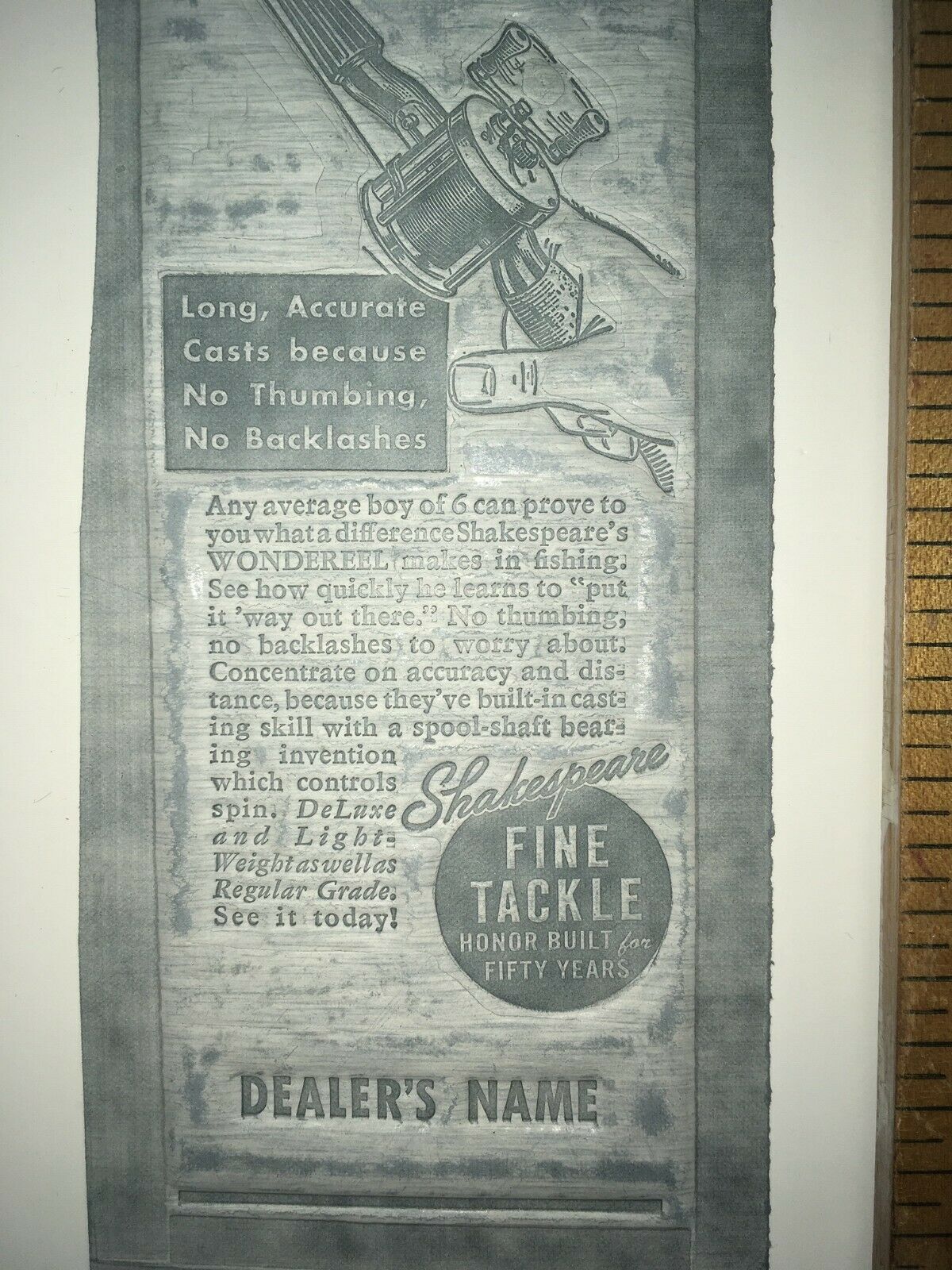-40%
1947 SHAKESPEARE "WONDEREEL Sonny can Prove It" Super COOL Vintage Print Ad Mat
$ 10.56
- Description
- Size Guide
Description
SUPER COOL 1947 SHAKESPEARE AD MAT FOR WONDEREELS FISHING TACKLE. "Sonny can prove it" cool graphics directed at son/boys fishing with dad. The reel with the casting skill built in. Grey green unique ad mat 1947 date on mat. A few scuffs here and there but very good condition for 74 years old.I will be listing several more different ad mats, see additional listings. These are very cool vintage cardboard embossed ad mats called dry matrix flongs for stereotyping. These were used to make a metal plate to print an ad in the 1940s and 50s. A
ll that I list are advertising different items and are unused Dry matrix flongs to make stereotypes.
more information, once these dry mat flongs for stereotypes were used, you could not use them again, :
"In printing, a
stereotype
,
stereoplate
or simply a
stereo
, is a solid plate of
type metal
, cast from a
papier-mâché
or plaster, or dry matrix mould taken from the surface of a
forme
of type.
The mould was known as a
flong
.
In
relief printing
, a
flong
is a temporary negative mould made of a
forme
of set type, in order to cast a metal
stereotype
(or "stereo") which can be used in a
rotary press
, or in
letterpress printing
after the
type
has been broken down for re-use. The process is called
stereotyping
.
Dry mat, or dry matrix process. Here there is no need to beat the matrix into the page of type, but simple pressure is enough. The pressures needed are quite high
and effectively require a hydraulic press. By 1946, the dry mat process had completely taken over in newspaper publishing in the United States
Making the stereotype
After moulding the stereotype it is carefully removed from the mould. If the locking the flong into a moulding box, the box was pivoted so that the flong was in the vertical plane, and liquid type metal was poured into the mould. For newspapers these moulds were cylindrical in shape. This quickly cooled, and the mould was opened to remove the stereo. The stereo might be cooled further. The back of the stereo was then shaved, to reduce it to the required thickness for the press. The stereo was also trimmed and had the edges bevelled (to enable the stereo to be camped into place). The stereos where then clamped into place on the printing cylinder, and the print run began.
Type metal is an alloy of
lead
,
tin
, and
antimony
. Lead on its own makes type too soft to be of use. Tin was added to lead to make it harder, but the results were unsatisfactory. It was found that adding both tin and antimony led to type that was hard, resistant to wear and to distortion under pressure, and gave sharp reproductions.
The lowest solidification point for a liquid lead, antimony, and tin alloy occurs when the antimony content is twelve percent, known as the
eutectic alloy
. Keeping the antimony content close to twelve percent ensured the lowest possible melting point, important for slug-casting machines which melted an alloy ingot for casting the slugs. Low melting point is also important for the metal used for stereos as very high temperatures would damage the flongs. The type metal used for stereos was slightly different from the type metal used for foundry type, slug casting machines like the
Linotype machine
, individual letter casting machines as in the
Monotype machine
, or the metal used for backing electrotypes. While increasing the antimony content increases hardness, the tin content must be increased in proportion to achieve this.












